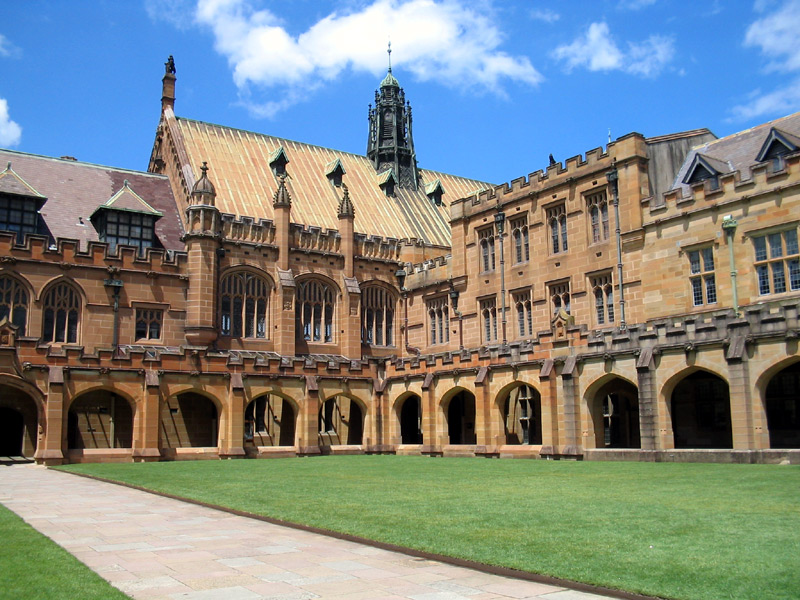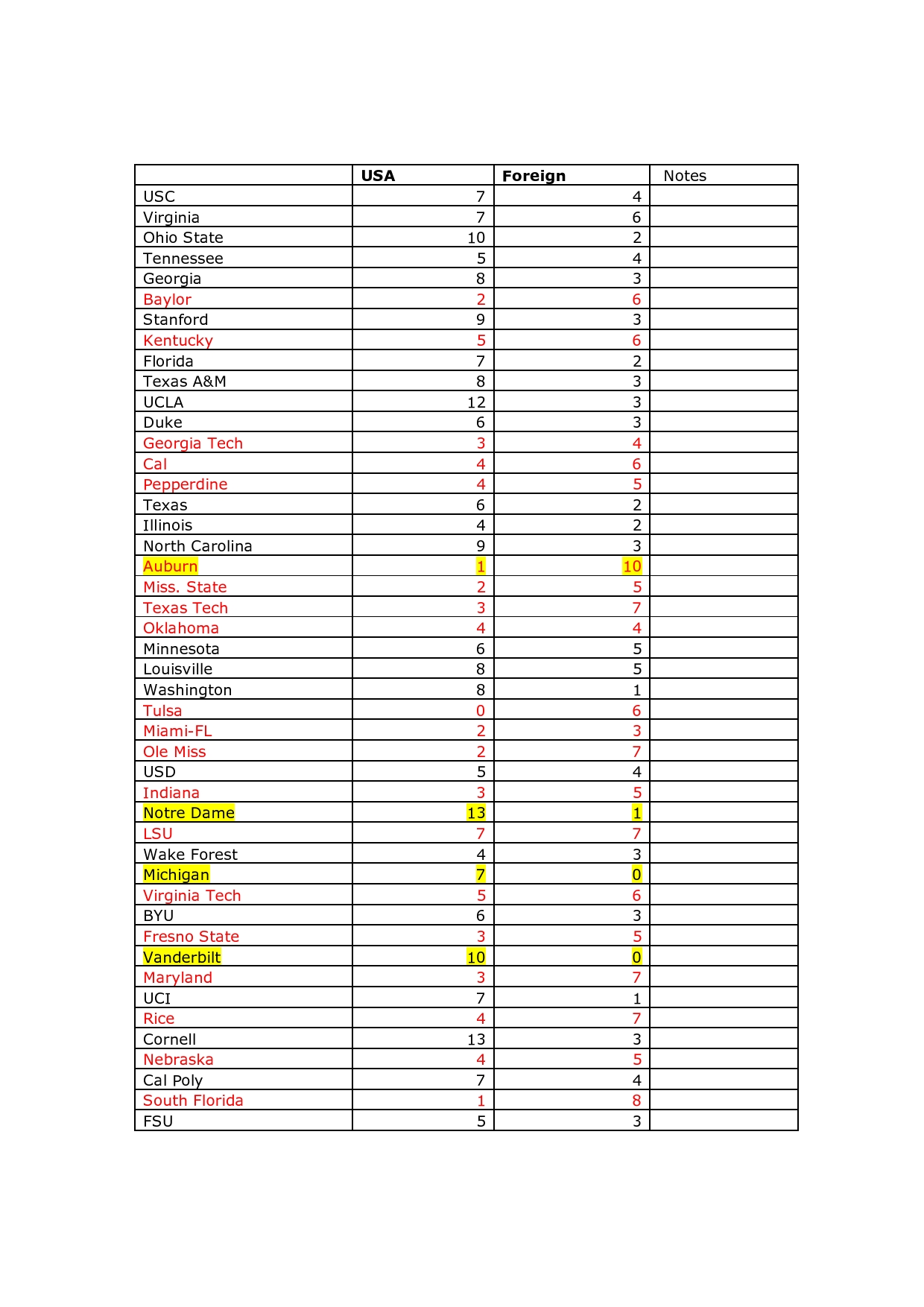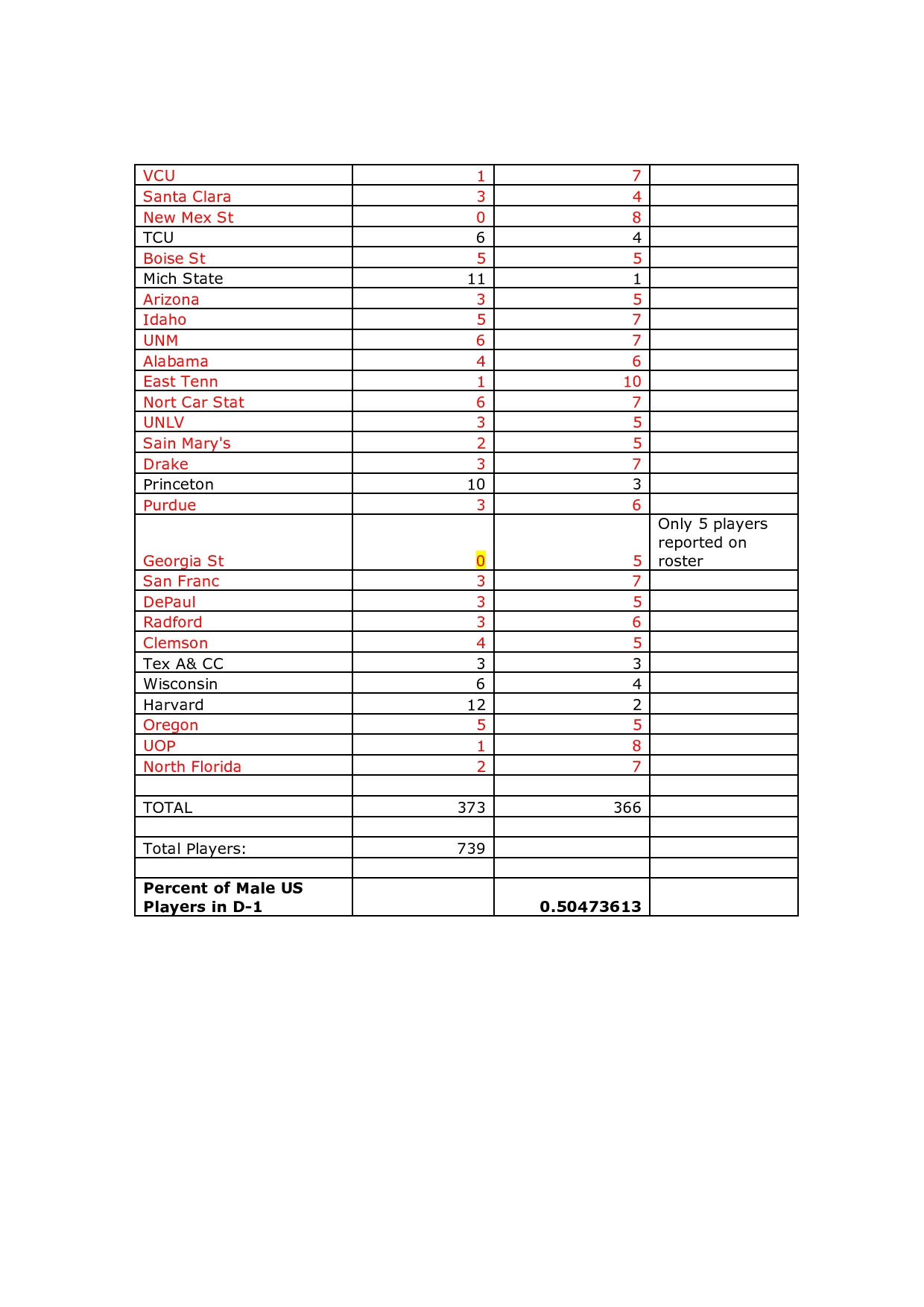McEnroe: Lost A Whole Generation of Players Who Should Have Gone To College
 Sunday, December 11, 2011 at 12:21PM
Sunday, December 11, 2011 at 12:21PM  CAtennis
CAtennis
 According to Patrick McEnroe: "We in the USTA maybe made a little mistake in pushing some of our junior prospects to go straight to the pros in the past. I think we lost a group who, if they had gone to college and had a chance to mature in every category, would still have had a chance to be a high-level professional....Only a small percentage of people playing college tennis will go pro, but if we can get a few into the top 100 we will be pleased... It can only increase our chances of producing a grand slam winner."
According to Patrick McEnroe: "We in the USTA maybe made a little mistake in pushing some of our junior prospects to go straight to the pros in the past. I think we lost a group who, if they had gone to college and had a chance to mature in every category, would still have had a chance to be a high-level professional....Only a small percentage of people playing college tennis will go pro, but if we can get a few into the top 100 we will be pleased... It can only increase our chances of producing a grand slam winner."
Also: "We're making more of an effort to encourage kids to go to college, or to stay in school once they get there. If you get someone as talented as Andy Roddick or Sam Querrey, it's pretty clear they're going to make a move to the pros, and rightly so. But over the last 15 years, I think we probably lost about a hundred potential top-100 players because they went pro too early. They were too young for a life on the road, they were lonely, and they got crushed by the competition. Next thing you know, they're completely out of the game. The reality is that college tennis is like Double-A ball, for the most part...You won't see many players who are going to wind up in the Top 10. But here in America, we could use more people in the top 30-50. We're really hurting in that department. In a lot of cases, I don't feel a player would lose any ground by playing in college. I'd be happy to see more of our young players take this road. It's a smart decision for tennis reasons, and also for life reasons."
There are, of course, two wrinkles with these assertions: (1) Which college should one attend for tennis given that, between 1971-2011, 580 tennis programs (not just D-1; not just men's tennis) were eliminated (see ITA-compile table, below); and (2) Who does the US college system benefit given the breakdown between US and foreign players (particularly in Division 1 - the most competitive league)?
TERMINATED PROGRAMS:
|
|
Men |
Women |
|
1971 – 1980 |
5 |
1 |
|
1981 – 1991 |
43 |
17 |
|
1992 – 2002 |
137 |
72 |
|
2003 – 2010 |
69 |
58 |
|
Year Unknown |
106 |
72 |
|
TOTAL |
360 |
220 |
NOTE: Per the ITA (whom we thank for providing this information) - "From 1971 – 2011 (to date), 360 men’s programs and 220 women’s have been eliminated. Men’s programs comprise 60% of the dropped programs which may lead many people to blame the unintended consequences of Title IX as the sole reason. However, the statistics show that 40% of the dropped programs have been women’s teams. Our research has found that other factors, including escalating costs, shrinking budgets, and reallocation of valuable real estate on which tennis courts sit, have contributed to the demise of collegiate programs." In other words, since Mr. McEnroe graduated from Stanford in 1988, over 200 programs have been lost...that's over ONE THOUSAND TWO HUNDRED playing spots that no longer exist...per year. Imagine how many players could have kept playing after college had they had the opportunity to play college tennis to begin with? How many more up-and-coming juniors could they have positively influenced through their playing and experiences? Here's a break-down by region and division. Note the programs lost from tennis powerhouse sections such as Southern California, Eastern, Midwest, texas and Southern.
TERMINATED PROGRAMS BY REGION:
|
USTA Section |
Division I M W |
Division II M W |
Division III M W |
NAIA M W |
Junior College M W |
TOTAL |
|
Caribbean |
0 0 |
1 1 |
0 0 |
0 0 |
0 0 |
2 |
|
Eastern |
4 2 |
4 2 |
15 5 |
0 0 |
6 4 |
42 |
|
Florida |
1 0 |
1 0 |
0 0 |
0 0 |
9 5 |
16 |
|
Hawaii Pacific |
0 0 |
0 0 |
0 0 |
0 0 |
0 0 |
0 |
|
Intermountain |
3 0 |
3 4 |
0 0 |
0 1 |
1 1 |
13 |
|
Mid-Atlantic |
5 1 |
2 1 |
3 1 |
2 2 |
7 5 |
28 |
|
Middle States |
3 0 |
7 3 |
4 6 |
1 0 |
10 10 |
44 |
|
Midwest |
15 2 |
6 3 |
12 4 |
5 4 |
12 8 |
71 |
|
Missouri Valley |
7 1 |
7 4 |
2 1 |
15 15 |
7 6 |
65 |
|
New England |
8 6 |
2 1 |
11 6 |
1 2 |
3 0 |
40 |
|
Northern |
0 0 |
7 2 |
1 1 |
3 3 |
4 2 |
23 |
|
No. California |
1 0 |
4 3 |
0 1 |
0 0 |
13 9 |
31 |
|
Pacific NW |
2 0 |
3 3 |
0 1 |
1 1 |
0 0 |
10 |
|
Southern |
10 1 |
15 7 |
0 0 |
10 9 |
26 13 |
89 |
|
So. California |
3 0 |
7 3 |
1 0 |
3 3 |
7 13 |
38 |
|
Southwest |
1 0 |
1 0 |
0 0 |
0 0 |
2 2 |
6 |
|
Texas |
6 0 |
6 6 |
1 1 |
1 1 |
18 15 |
54 |
|
|
|
|
|
|
|
|
|
Sub-Totals |
69 13 |
76 43 |
50 28 |
42 41 |
125 93 |
580 |
The tables below (teams ranked in top 75 at the end of the 2010 season) outline the breakdown of male US players in Division 1 rosters (2011-2012 season). Figures were compiled from the respective team websites as the ITA purports to not to track this type of data. We have requested this information from the ITA as it would be interesting to evaluate the fluctuations of percentages from year-to-year (particularly since 1988 going forward - since there's a possibility that Mr. McEnroe's outlook is shaped by that particular framework).
At first blush, things don't appear all that bleak for American players. After all, the majority of players are in fact American. However, the figures may be somewhat slanted in that if a foreign player comes to a US university, he does so with the intention of actually playing (i.e., these players are, for the most part, "starters"). They are not as enamored with merely attending (but not playing for) a particular school as a home-grown talent might be. Furthermore, a foreign starter is likely to command a larger scholarship percentage (unless they are financially "well off", they are probably not going to come from across the globe AND pay for college, are they). After adjusting the figures to account for these two factors, it is a distinct possibility that not only do the foreign players actually get the majority of the overall tennis experience afforded by the US college system (the % of matches played can be determined at the end of the season), but they also get the majority of the money allocated to the scholarships (closely guarded secret).
Wayne Bryan is a big advocate in putting a limit on foreign scholarships. However, to be competitive in the NCAA Team rankings, coaches have to protect themselves by going foreign. After the top 20 Americans, it would be foolish to bypass on a world class foreigner to get a lower ranked American. Coaches need to win to keep their jobs and tennis programs need to produce to justify the drain on the Athletic Department budgets. Until the rules change, college tennis will be heavily developing not only US players, but also our competition around the world (ie: Somdev Devvarman).
Patrick McEnroe is correct when he says we have lost a whole generation of players who should have went to college. First of all, these players would have made college tennis more competitive, decreased the number of foreigners on high-end tennis programs, and increased the odds of more kids able to reach the top 100 through an old-fashioned maturation process.
One of the new developments is the enlargement of the USTA Summer Collegiate Team. Each player gets a $3,000 grant, a week of training with the USTA, and 2 USTA selected collegiate coaches at certain events. When college players graduate, this is when they need the support the most. Their parents who have supported them from 8-18 are mentally tired and financially tired. College programs can no longer provide coaching or support. The kid is left alone to his own devices.
According to Tim Russell of the USTA, the average age of men in the top 200 is 25 and women is 24. Tim shines light that the average player spends $143,000 to chase the dream per year. Read the article here. $3,000 grant is clearly not enough, but atleast college programs can fill the gap between 18-21 in offsetting costs and helping with the maturation process.
In the near future, we will show the percentage of foreigners vs American born players for top 50 D1 teams over time.
2011-2012 SEASON: US PLAYERS V. FOREIGN IN DIV. I TOP 75




Reader Comments (10)
What is it that has prompted all of these programs to have been discarded? It can't really be the cost - tennis is relatively inexpensive to support so long as courts exist already. I really feel feel at a loss to understand why this has happened. Did tennis balls become so expensive that a university couldn't supply enough new cans to have a match? High quality shoes that are not worn badly make tennis more fun. Strings do break but once you have a stringing machine you can buy string as a reel and restring racquets without taking out a loan. Why have hundreds of programs been cut? Were the coaches earning such astronomical salaries that whole programs were cut for that reason alone? Couldn't the USTA have helped pay some of their salaries? Is it the travel expenses that became unendurable? There are ways to keep those costs from becoming crippling. I just really don't get it...
what's especially disconcerting to me is the number of foreign players on the teams of public (i.e. state) universities. i understand the private schools going after the foreign players, but how can a public university, funded solely by tax dollars, justify it? i really hope the governing bodies take a good hard look at their "rules" and come up with something better!
I agree with Lisa, certainly the public universities should be severely limited on the number of spots for foreign players - like one per team maximum.
On another note, kids should go to college and actual take studying in college seriously, so that they will have a resonable paying job if they don't make it to the top 100 players of the world - which is what will happen 99.99999999% of the time.
Foreign players are also not as choosy when it comes to playing on certain teams. would rather play and get paid than just go to a school because it has a good football team. Our players only have themselevs to blame.
Tweener and Lisa - would limiting public universities to number of outside spots result in an unfair competitive advantage to private schools? restrictions should be applied across the board. what's US players' excuse to not go to places like Clemson, Auburn, Mississippi, Kentucky or Baylor? A lot of the coaches have to recruit foreigners because American players turn up their noses when it comes to playing at some colleges. foreigners aren't as particular.
KEEP IT COMING...Shine that light - but I think we all recognize that change will be verrrrry slowwwww in coming. :(
Slow change is good..it has the opportunity to become ingrained in our psyche. At the very least, the ones who truly care will have the opportunity to say "I told you so". Thank you for continuing to read and please feel free to share with all your tennis friends.
I agree with Karl that there is a shame to be placed on the colleges and Universities for letting the tennis programs fail. The biggest cost to a tennis program is the court maintenance. The USTA recently put all that money into the 10 and Under program, which I firmly believe was a great move.
Perhaps McEnroe's realization couldn't have come at a better time. Perhaps now that the youngsters are handled, the USTA can start addressing the issue of higher level school programs. And maybe, just maybe they will have it all in order by the time these 10 and Under youngsters get to college.
A slow change yes, but it would be a brighter future for tennis.
Craigger, private schools are private, so I can't see how anyone could ever impose a rule on who can come to the private school - but obivously yes, they would be at an unfair advantage if public universities had stricter rules or limitations on foreigners and privates didn't. Perhaps league/division rules could apply to anyone playing in a given league/division? Im not sure how universities break up leagues in tennis, but perhaps no limitations on foreigners for private shcools - but - if they wish to play in a certain league/division, then they would need to follow the league/division rules of only one foreigner per school roster. Something like that? someone with college specific knowledge please chime in. So the private schools would have to follow the one foreigner per tean rule by default? possible?
I don't see what is the problem with allowing foreigners to play college tennis in the U.S. They help create better competition for the strongest U.S. players. If we want U.S. college players to become better pro players then we need to keep the best foreigners in college tennis.
I think one of the major reasons college tennis programs have been cut is that tennis doesn't generate any revenue for the school. Football and basketball generate all of the money for sports at colleges. So, when colleges aren't getting enough money through boosters and alumni they start to cut programs. Tennis is actually one of the more expensive sports. If you start factoring in tennis balls, string, rackets, court maintenance, coaching, uniforms, shoes and travel it adds up. I would think it would cost more per year than basketball, soccer, track, and volleyball. For most of those sports one only needs a uniform and a few balls.